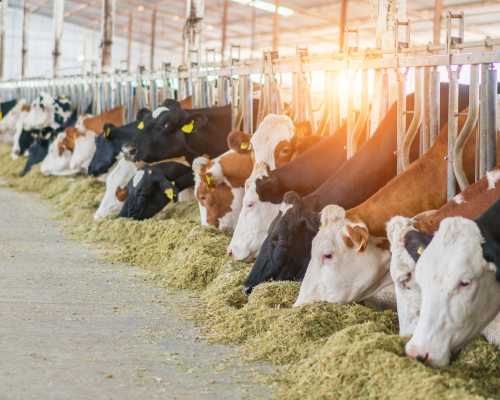
Written by: Sarah Novak | August 7, 2024
Summertime is always when I tell myself I am going to catch up on reading (work-related and personal) and a couple of weeks ago, my flights were cancelled. I could not do the work travel as planned, which left a lot of open time on my calendar. Put these two together and I spent a bit of time reading an article from earlier this year in the Journal of Dairy Science, “Fifty Years of Environmental Progress for United States Dairy Farms.”
left a lot of open time on my calendar. Put these two together and I spent a bit of time reading an article from earlier this year in the Journal of Dairy Science, “Fifty Years of Environmental Progress for United States Dairy Farms.”
The article provides an in-depth analysis of the significant environmental advancements made in the U.S. dairy sector over the last 50 years, focusing on 1971 compared to 2020. Over the last half-century, dairy farms across the United States have made significant strides in sustainability and efficiency:
Milk production has increased significantly with fewer cows, reflecting a 30% reduction in cow numbers while doubling the milk output.
Greenhouse gas emissions per unit of milk have decreased by 42%, highlighting major strides in reducing environmental impact.
Despite the increase in total production, fossil energy use per unit of milk has dropped by 54%.
And here’s how this has happened:
Increased Efficiency: Dairy farms have seen a substantial increase in milk production efficiency, with fewer cows producing significantly more milk today than in 1971, thanks in part to better genetics, nutrition and farm management practices.
Environmental Impact: Despite increased cattle production, the environmental impact per unit of milk produced has decreased, including reductions in greenhouse gas emissions, energy use and water consumption per unit of milk. However, the total environmental impact has risen in some areas due to the overall increase in production.
Regional Variations: The study notes significant regional differences in environmental impacts, with farms in the Western United States seeing larger increases in cow numbers and, consequently, greater environmental loads. These were partly offset by significant reductions in the Eastern United States.
Resource Use: Improvements in resource efficiency include better use of water, energy and fertilizers. These improvements stem from both technological advancements and more sustainable farming practices, like reduced tillage and the use of cover crops.
Pollutant Emissions: The study details changes in specific pollutant emissions, such as methane, ammonia and nitrous oxide, providing a nuanced view of how different pollutants have been managed over time.
While much progress has been made, the article underscores the ongoing need for innovative strategies and technologies to continue reducing the environmental footprint of dairy farming. That is one of the many reasons why the American Feed Industry Association is supporting the Innovative Feed Enhancement and Economic Development (Innovative FEED) Act – it can provide those innovative FEEDing strategies for tomorrow’s dairy farmers.
While I wish I was able to go on the work trip to visit with members, I do appreciate a few quiet hours open on my calendar to do a little catch-up in my reading!
Comments See our policy on comments